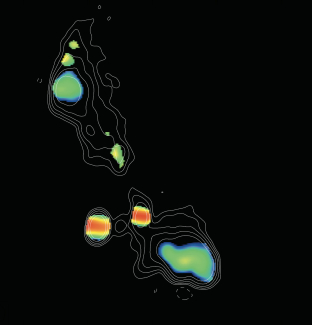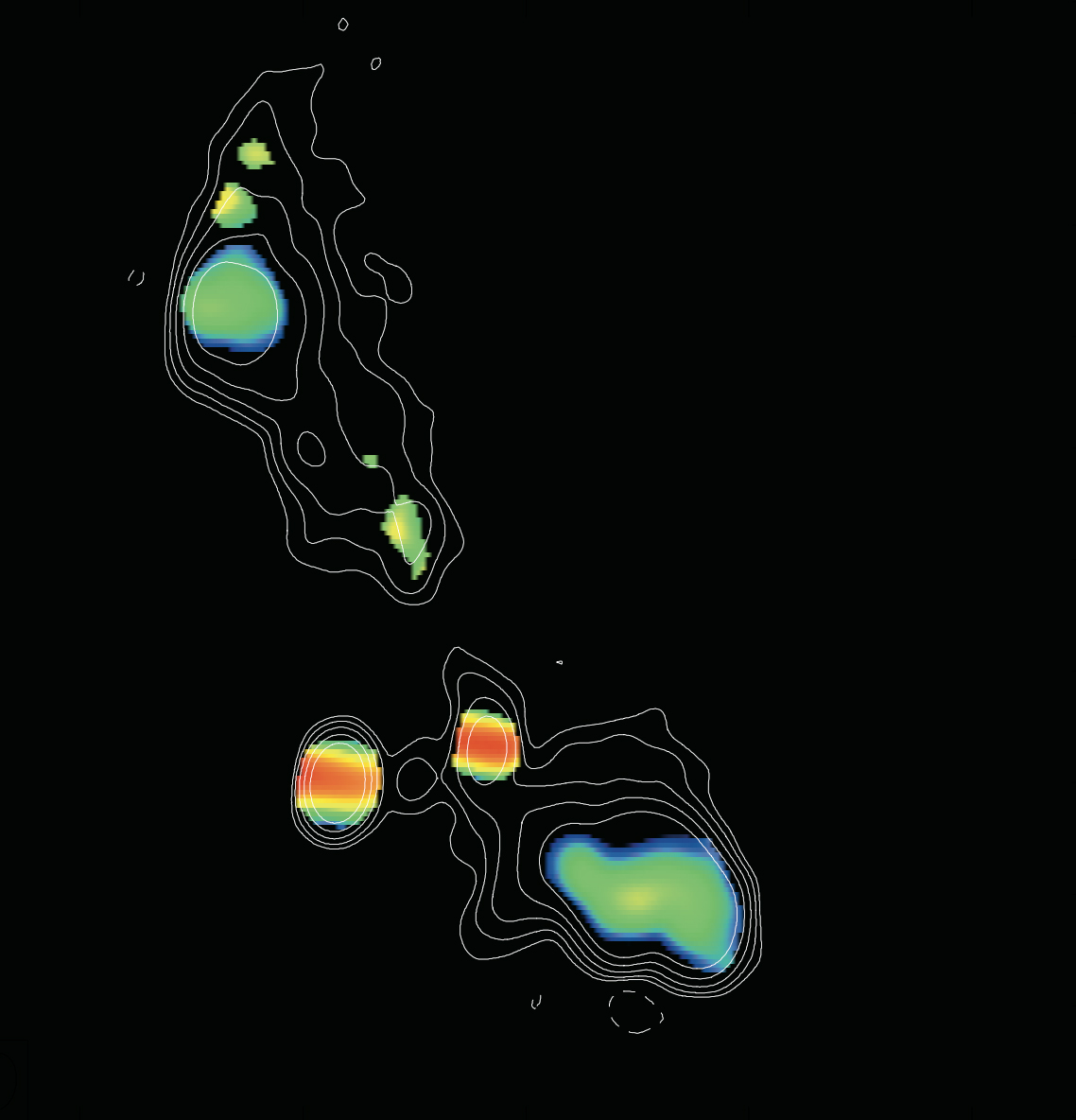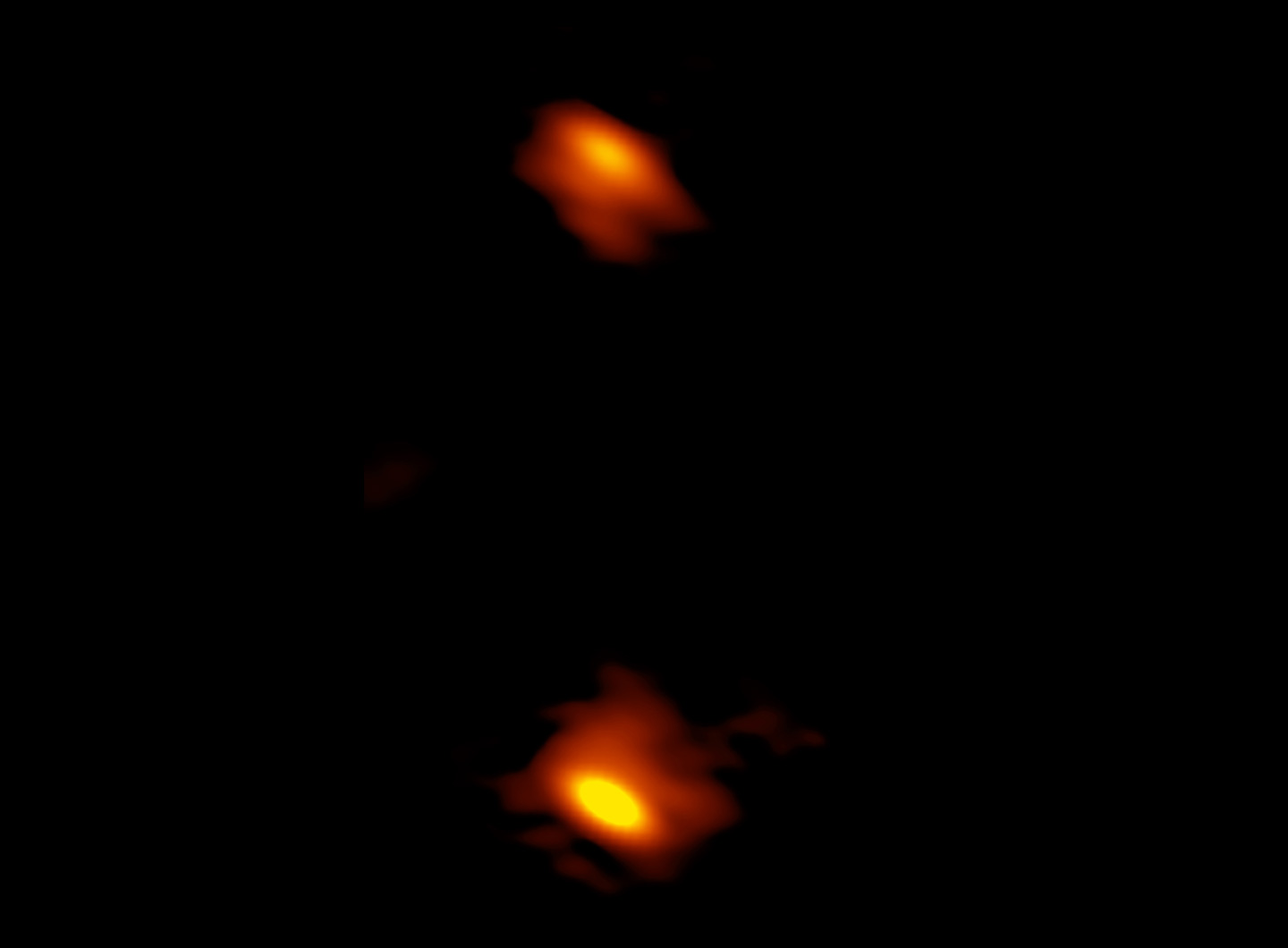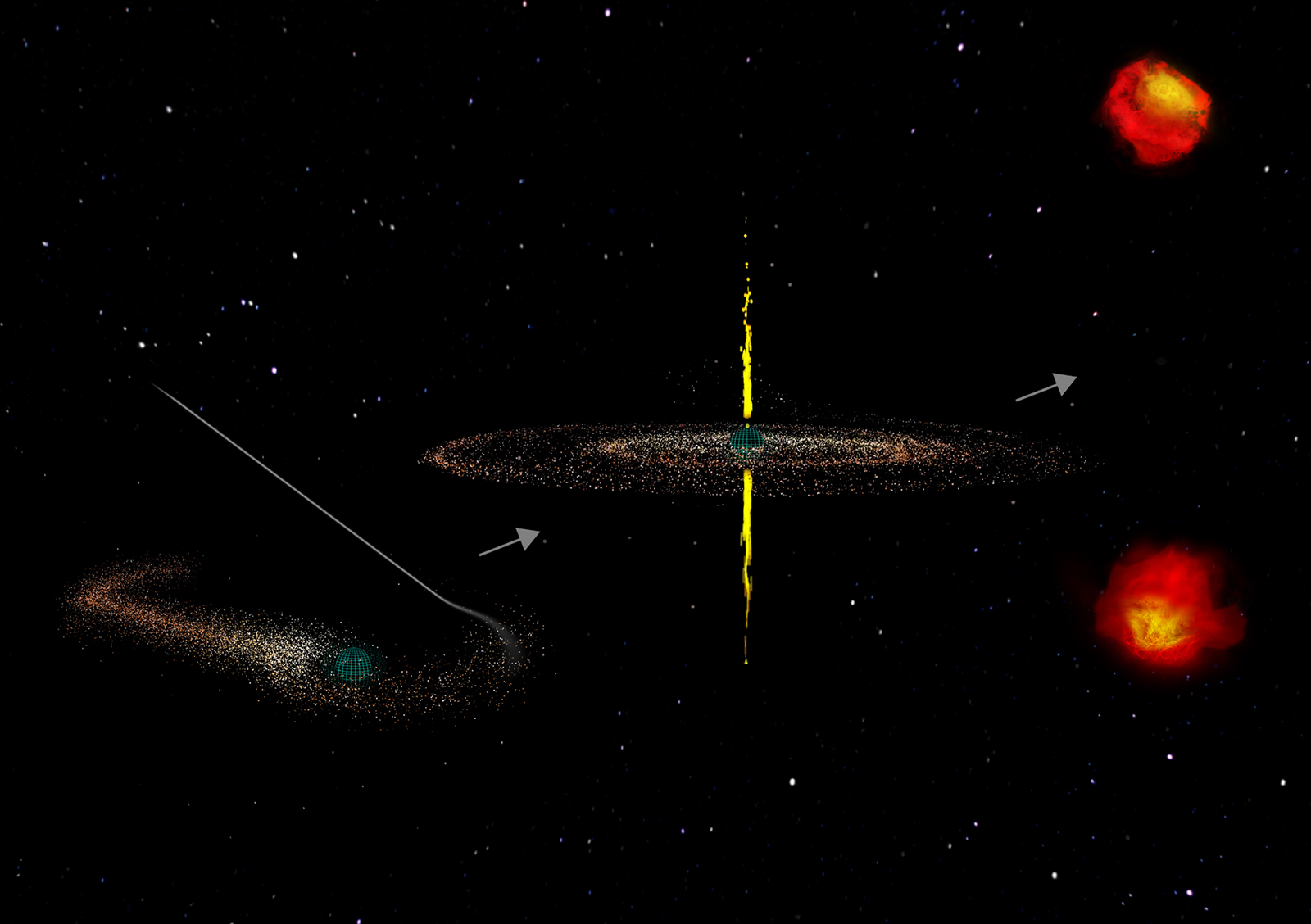Sleeping Supermassive Black Holes Awakened Briefly...

|
Announcement Date :
|
Sleeping Supermassive Black Holes Awakened Briefly by Shredded Stars: Radio observations of Compact Symmetric Objects (CSOs) provide new window on black holes
A new investigation into an obscure class of galaxies known as Compact Symmetric Objects, or CSOs, has revealed that these objects are not entirely what they seem. CSOs are active galaxies that host supermassive black holes at their cores. Out of these monstrous black holes spring two jets traveling in opposite directions at nearly the speed of light. But in comparison to other galaxies that boast fierce jets, these jets do not extend out to great distances—they are much more compact. For many decades, astronomers suspected that CSOs were simply young and that their jets would eventually travel out to greater distances.

Now, reporting in three different papers in The Astrophysical Journal, a team of researchers, led by Anthony (Tony) Readhead, IA-FORTH honorary fellow and Caltech Robinson Professor of Astronomy, Emeritus, has concluded that CSOs are not young but rather lead relatively short lives.
"These CSOs are not young," explains Readhead. "You wouldn't call a 12-year-old dog young even though it has lived a shorter life than an adult human. These objects are a distinct species all of their own that live and die out in thousands of years rather than the millions of years that are common in galaxies with bigger jets."

In the new studies, the team reviewed literature and past observations of more than 3,000 CSO candidates, verifying 64 as real and identifying an additional 15 CSOs. All these objects had been previously observed by the National Radio Astronomy Observatory's Very Long Baseline Array (VLBA), funded by the National Science Foundation (NSF), and some had been observed by other high-resolution radio telescopes. "The VLBA observations are the most detailed in astronomy, providing images with details equivalent to measuring the width of a human hair at a distance of 100 miles," Readhead says.
The team's analysis concludes that CSOs expel jets for 5,000 years or less and then die out. As for what is fueling the short-lived jets, the scientists believe the cause is a tidal disruption event (TDE), which occurs when a single star wanders too close to a supermassive black hole and is devoured.
"We think that a single star gets ripped apart, and then all that energy is channeled into jets along the axis the black hole is spinning around," Readhead says. "The giant black hole starts out invisible to us, and then when it consumes a star, boom! The black hole has fuel, and we can see it.” According to the astronomers, the CSO jets likely form when a supermassive black hole snacks on not just any star, but a very massive one.

By analyzing the varied collection of CSO radio images, the researchers say they can trace how the objects age over time, almost like looking at a photo album of a CSO’s life to observe how its jets evolve. The younger CSOs have shorter jets that are closer to the black holes, while the older objects have jets that extend further out from their black hole.
Ιf the discoveries of Readhead and his team are confirmed with additional observations, the CSOs will provide a whole new avenue for studying how massive stars at the centers of galaxies interact with supermassive black holes.
"These objects are indeed a distinct population with their own distinct origin, and it is up to us now to learn more about them and how they came to be," Readhead says. "Being able to study these objects on timescales of years to decades rather than millions of years has opened the door to a whole new laboratory for studying supermassive black holes and the many unexpected and unpredictable surprises they hold."
A video which shows schematically the formation of a CSO is presented bellow:
The three studies are, "Compact Symmetric Objects - I Towards a Comprehensive Bona Fide Catalog," "Compact Symmetric Objects – II Confirmation of a Distinct Population of High-Luminosity Jetted Active Galaxies," and "Compact Symmetric Objects – III Evolution of the High-Luminosity Branch and a Possible Connection with Tidal Disruption Events." The studies were funded by NSF, NASA, the ERC, Caltech, and the Max Planck Institute for Radio Astronomy in Bonn, Germany.
